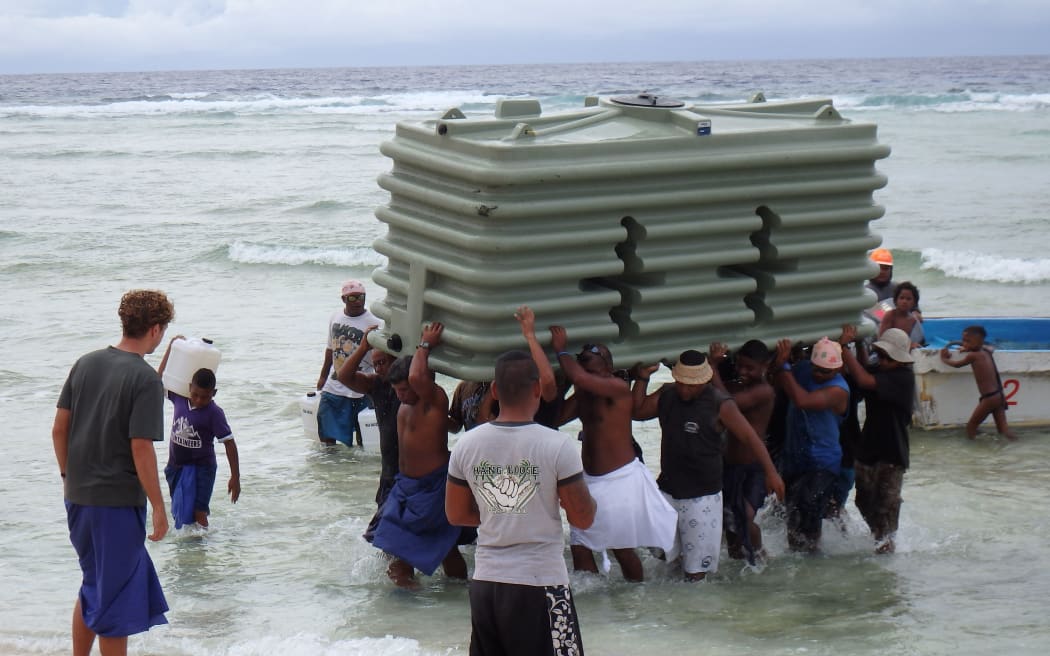Some parts of the Federated States of Micronesia and the Marshall Islands are experiencing their worst drought in recorded history, with some atolls close to running out of drinking water.

Tanks arrive in Federated States of Micronesia after last year's Typhoon Maysak. Photo: Rupeni Mario
Mark Adams, the emergency response coordinator at the International Organisation for Migration's Pohnpei office, said the drought had been exceptionally strong in Micronesia, with some islands having had little to no rain since the end of last year.
He said some islands were in the worst possible category of drought, with only a few weeks of drinking water left.
"Frankly the robust rain won't return until after mid-year," he said.
"The biggest concern right now, frankly, is drinking water, and that these remote islands are typically dependent on rainfall and rainwater catchments. These catchments have only, in some cases, weeks and at most a month of [water] left."

Typhoon Maysak caused extensive damage in the Federates States of Micronesia's Yap and Chuuk states in early 2015. Photo: Brad Holland / FSM Office of Environment and Emergency Management
Mr Adams said food security was a real concern, with many crops starting to wilt or not produce fruit, especially in areas struck by the category five typhoon Maysak last year.
"Crops are beginning to show the effects of the drought, staple crops are either misshapen -- such as the pandanus, and the yam, and the breadfruit -- and wilting, or they are not producing as they normally would."
Logistical challenge
Mark Adams said a wide-ranging response was underway, but logistically, it was proving to be a significant challenge in the vast region.
The Federated States of Micronesia and the Marshall Islands consist of many atolls spread across many thousands of kilometres of ocean, and the region is in the grip of one of the worst El Niño systems in years.
As water shortages loomed widely, Mr Adams said water supplies and reverse-osmosis units, which turn sea water into fresh water, had been shipped across the countries.
But he admitted the drought is difficult to respond to.
"The logistics challenge underlaying every component of these operations, from communications, to figuring out how severe the problems are, which populations are most in need with the limited supplies available, the limited vessels available to deliver those supplies, and frankly, the time it takes to get supplies to this region," he said.
Mark Adams said the IOM and the two countries' governments have prepositioned supplies, but more assistance is needed.



